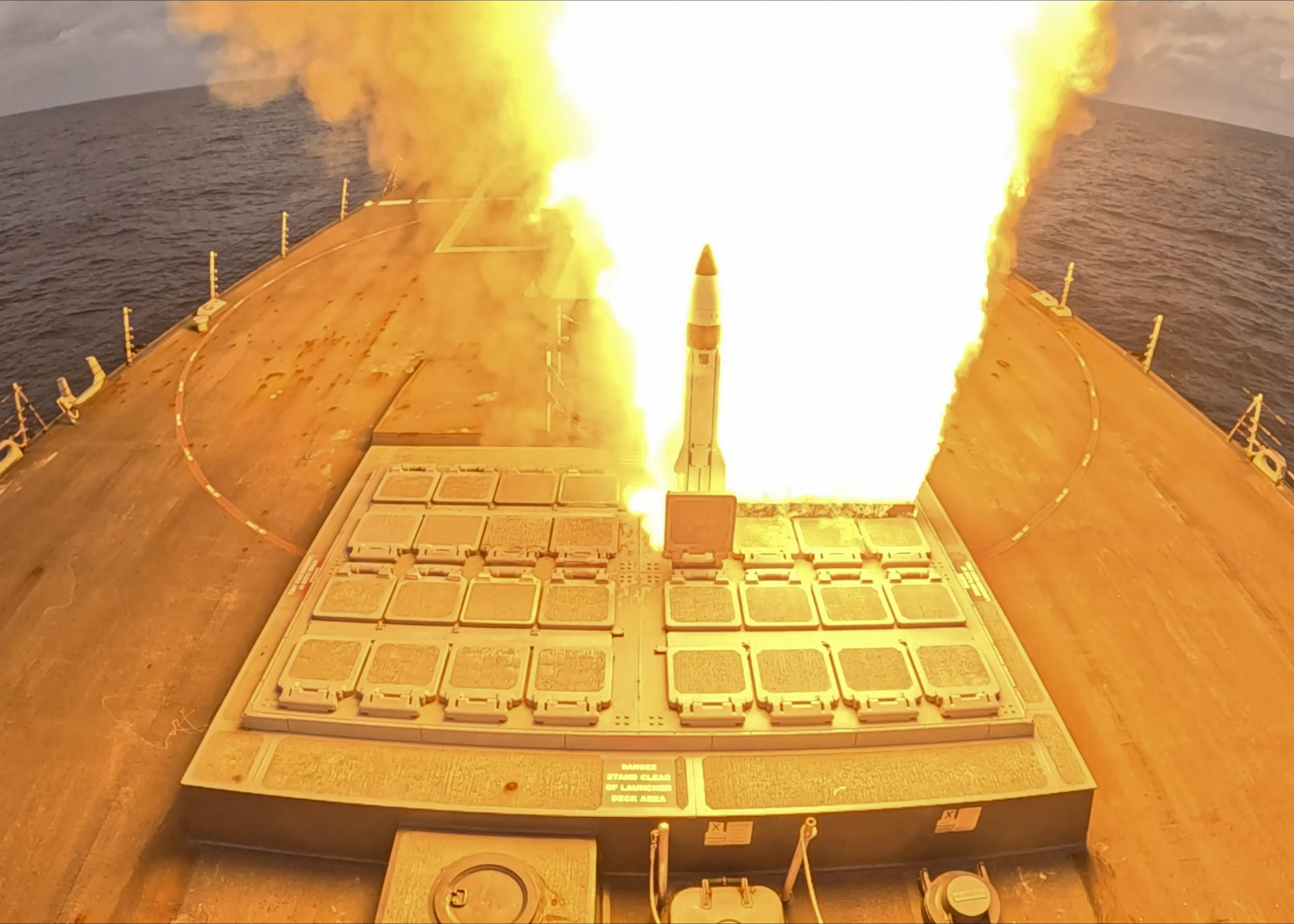
The United States demonstrated its naval power as a pair of destroyers intercepted ballistic missiles during live-fire drills in Europe, showcasing its combat credibility to potential adversaries.
“The two destroyers’ successful missile intercepts demonstrated the lethality of U.S. Navy systems and the ability to operate seamlessly with Allied nations to maintain a stable security environment,” the Europe-headquartered U.S. Sixth Fleet announced on Thursday.
Why It Matters
U.S. Navy cruisers and destroyers equipped with Aegis weapons systems to provide “integrated air and missile defense,” regularly conduct missile tests. As of December 2023, a total of 49 Aegis-equipped ships capable of ballistic missile defense were in service.
Mass Communication Specialist 2nd Class Jonathan Nye/U.S. Navy
The missile intercept drills come as President Donald Trump revealed details of the $175 billion Golden Dome initiative, which aims at “forever ending the missile threat to the [U.S.] homeland” by building a multi-layered defense grid that includes space-based interceptors.
What To Know
The drills were part of Exercise At Sea Demonstration/Formidable Shield 25 (ASD/FS 25), which has been taking place in the North Sea, Norwegian Sea, and North Atlantic Ocean since May 3. It features air and missile defense drills against a range of threats.
The three-week exercise aims to strengthen NATO interoperability in “a joint, live-fire, Integrated Air and Missile Defense (IAMD) environment,” using the alliance’s command and control reporting structures, according to Naval Striking and Support Forces NATO.
Destroyer USS Thomas Hudner launched a Standard Missile-6 (SM-6) at a short-range ballistic missile target on May 15. Five days later, it and its sister ship, USS Bulkeley, intercepted a medium-range ballistic missile target and a simulated target using a Standard Missile-3 (SM-3) interceptor. Targets in both drills were “successfully engaged.”
According to U.S. major defense contractor Raytheon, the SM-3 is designed to destroy short- to intermediate-range ballistic missiles, while the SM-6 is described as “three missiles in one,” capable of conducting anti-air, anti-surface, and ballistic missile defense missions.
Depending on its variant, the SM-3 has an estimated range of 434 to 1,550 miles, while the multifunctional SM-6 has a reported range of up to 290 miles, according to specialist outlets Naval News and Breaking Defense. The actual ranges of these missiles remain classified.
As of last October, five U.S. Navy anti-ballistic missile destroyers were homeported in Spain, providing “full coverage and protection” for NATO European countries against the threat posed by the proliferation of ballistic missiles.
What People Are Saying
The U.S. Sixth Fleet said: “ASD/FS 25 includes a series of live-fire events against unmanned air and surface systems, subsonic, supersonic, and ballistic targets, incorporating multiple Allied ships, multi-nation/multi-service ground-based air defenses, and aviation forces working across battlespaces to deliver lethal effects, accomplish exercise objectives, and hone warfighting skills.”
Captain Michael Dwan, commander of the Task Group 154.64 and Naval Striking and Support Forces NATO (STRIKFORNATO)’s U.S. Maritime Ballistic Missile Defense Assets Adviser, said: “Exercises like ASD/FS are critical for refining our collective integrated air and missile defense capabilities, ensuring we can respond effectively to any threat from any direction and maintain a credible deterrent posture.”
What Happens Next
The U.S. military newspaper Stars and Stripes reported that a sixth destroyer based in Spain is scheduled to arrive at its new home port next year. These forward-deployed warships are intended to defend Europe against ballistic missile attacks from countries such as Iran.
